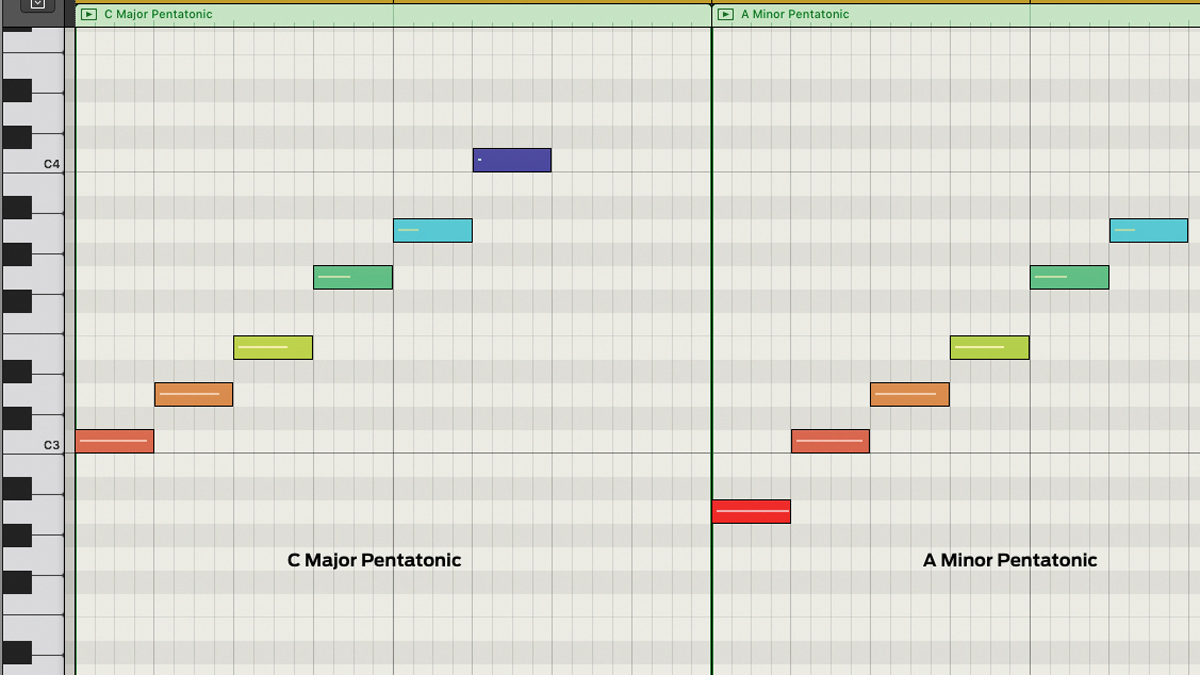A super-quick guide to pentatonic scales
If you want to improvise, start here

These incredibly useful five-note scales are heavily relied upon in all genres of music, but particularly pop. Because of their simplicity compared to a normal seven-note major or minor scale, they’re often used to introduce beginners to the world of improvisation.
To create major and minor pentatonic scales, imagine removing the notes B and F from the keyboard. If you then play a C major scale, you’d get C D E G A – the C major pentatonic scale. And if you played A C D E G, the result would be the A minor pentatonic scale. So a major pentatonic can be thought of as a major scale with the fourth and seventh degrees missing, while a minor pentatonic can be thought of as a natural minor scale with the second and sixth degrees missing.
The reason these scales work so well over many chord progressions is that they contain either chord tones found in major or minor triads, or common extensions. As a bluesy bonus, if you add a sharpened fourth to the minor pentatonic, you get the famous blues scale, which is perfect for riffing and soloing over almost anything.
Get the MusicRadar Newsletter
Want all the hottest music and gear news, reviews, deals, features and more, direct to your inbox? Sign up here.
Computer Music magazine is the world’s best selling publication dedicated solely to making great music with your Mac or PC computer. Each issue it brings its lucky readers the best in cutting-edge tutorials, need-to-know, expert software reviews and even all the tools you actually need to make great music today, courtesy of our legendary CM Plugin Suite.










